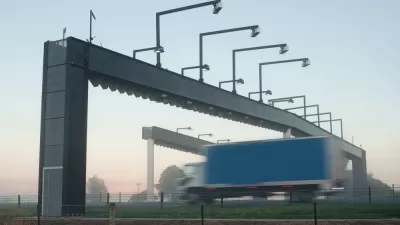The Pennsylvania P3 Act was approved in 2012 to help fund the cost of repairing and maintaining the state’s structurally deficient bridges. PennDOT has recently expanded its goals for the program—to 500 bridge repair projects.
With more than 4,000 structurally deficient bridges, Pennsylvania leads the nation in the ignominious metric of most structurally deficient bridges (18 percent of its bridges are structurally deficient, compared to the national average of 8 percent). But in the coming year, the state will launch a public-private partnership program to repair 500 of those bridges, reports Charles Chieppo.
The Pennsylvania P3 Act allows the Pennsylvania Department of Transportation (PennDOT) to bundle similar projects rather than designing and building each one at a time. Also, “Recognizing that operations and maintenance account for 80 to 90 percent of costs over the lifetime of a transportation asset, the private partners will also operate and maintain the bridges for as long as 40 years.” Because “Payment will be based on the contractor's performance at limiting lifecycle costs,” the private partners will have plenty of incentive to deliver durable products.
The PennDOT is expecting big returns from the program: “The Pennsylvania P3 Act…is expected to spark about $3.5 billion annually in additional transportation infrastructure investment without relying exclusively on tax revenue…” Not only that, but the PennDOT claims that “absent the [Pennsylvania P3 Act], the bridge replacements would take 15 to 20 years…”
FULL STORY: A Cost-Effective Way to Rebuild 500 Bridges

Maui's Vacation Rental Debate Turns Ugly
Verbal attacks, misinformation campaigns and fistfights plague a high-stakes debate to convert thousands of vacation rentals into long-term housing.

Planetizen Federal Action Tracker
A weekly monitor of how Trump’s orders and actions are impacting planners and planning in America.

San Francisco Suspends Traffic Calming Amidst Record Deaths
Citing “a challenging fiscal landscape,” the city will cease the program on the heels of 42 traffic deaths, including 24 pedestrians.

Defunct Pittsburgh Power Plant to Become Residential Tower
A decommissioned steam heat plant will be redeveloped into almost 100 affordable housing units.

Trump Prompts Restructuring of Transportation Research Board in “Unprecedented Overreach”
The TRB has eliminated more than half of its committees including those focused on climate, equity, and cities.

Amtrak Rolls Out New Orleans to Alabama “Mardi Gras” Train
The new service will operate morning and evening departures between Mobile and New Orleans.
Urban Design for Planners 1: Software Tools
This six-course series explores essential urban design concepts using open source software and equips planners with the tools they need to participate fully in the urban design process.
Planning for Universal Design
Learn the tools for implementing Universal Design in planning regulations.
Heyer Gruel & Associates PA
JM Goldson LLC
Custer County Colorado
City of Camden Redevelopment Agency
City of Astoria
Transportation Research & Education Center (TREC) at Portland State University
Jefferson Parish Government
Camden Redevelopment Agency
City of Claremont



























